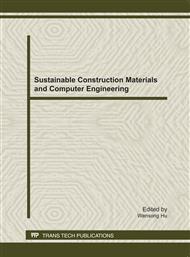p.161
p.166
p.172
p.179
p.184
p.190
p.197
p.204
p.210
Design of Computer Simulation Model for the Analysis 0f Coupling Effects between Actuators of Hydraulically Driven 6 DOF Parallel Manipulators
Abstract:
This paper presents a computer simulation model to analyze coupling effects between actuators of a hydraulically driven six degrees of freedom parallel manipulators. The design is based on the multi-body dynamics model of the system built using Kane’s formulation and hydromechanics’ principles. Combining the two parts, an integrated computer simulation model is designed to analyze coupling effects using joint space inverse mass matrix. The designed computer simulation model was used to establish a coupling effects relationship between actuators. The simulation results in frequency domain show that the coupling effect is heavier between odd and even numbered actuators. The result further reveal that the dynamics coupling property of the system increase with the frequency and reach the maximum value at the natural frequency. At a frequency higher than the natural frequency the coupling property decreases. This study can assist to provide optimum methods for mechanism designers and can offer a basis for comparing and selection of design options. It can also lay a good foundation for studies on decoupling control strategies.
Info:
Periodical:
Pages:
184-189
Citation:
Online since:
September 2011
Authors:
Price:
Сopyright:
© 2012 Trans Tech Publications Ltd. All Rights Reserved
Share:
Citation:


